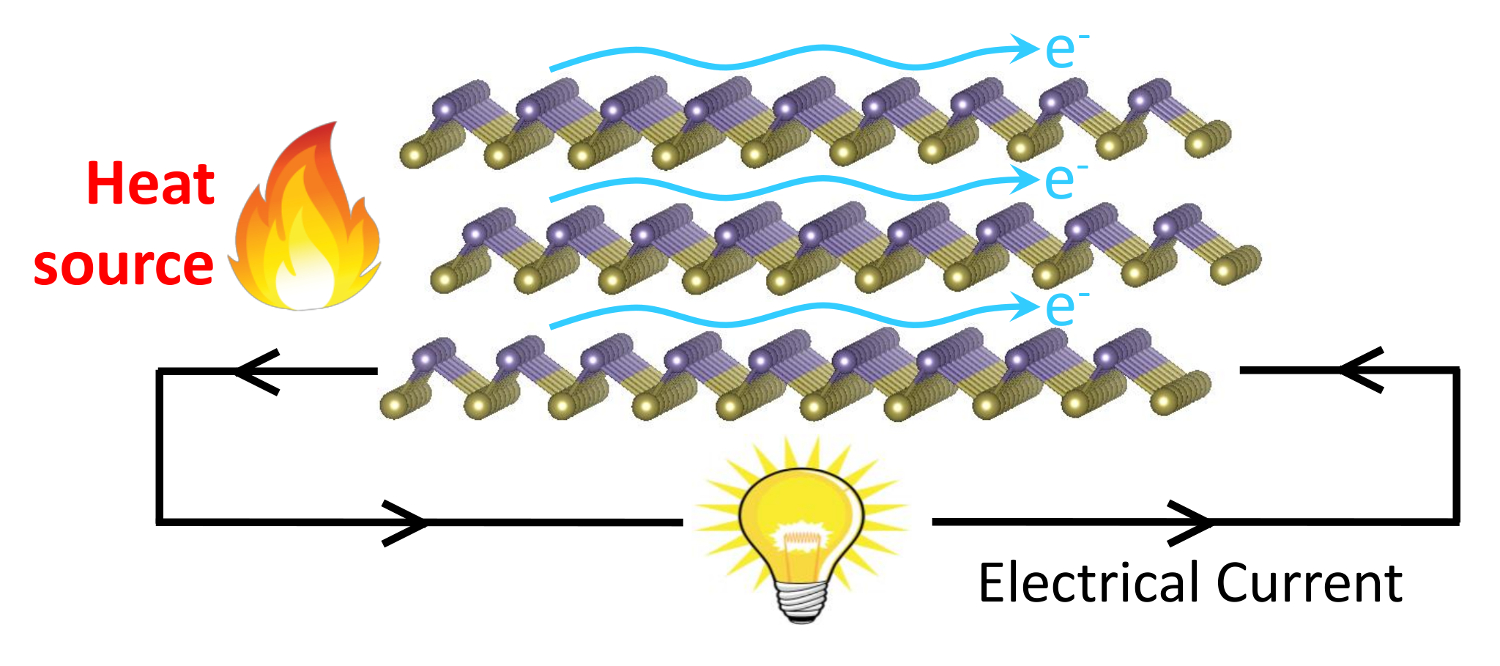Spring, 2020

Jesse Maassen wants to understand how electrons and heat flow through materials so he can capture excess energy from heat sources and use it to generate electrical power.
“My research group’s overarching theme is the study of electro-thermal transport in materials and devices — such as semi-conductors and metals — using theory and simulation,” says Maassen, a professor in the physics and atmospheric science department at Dalhousie University. “We focus on understanding what controls the movement of electrons and heat in materials, so we can design new materials with enhanced properties.”
One of the materials he studies is called thermoelectrics. When thermoelectrics are placed in contact with heat sources, they can convert the thermal energy into useful electrical energy, that can be used for everything from charging our phones to powering our homes. For example, using heat from combustion in a car, you can power some of the car’s battery.
“Thermoelectrics could have a big impact,” he says. “Roughly 60 per cent of the energy we produce is lost as waste heat — it just evaporates into the environment. On a global scale, this adds up to a huge amount of energy we’re throwing away. Thermoelectrics could harness this waste heat.”
Maassen’s goal is to improve the efficiency of the energy conversion from thermal to electrical, so this technology can become more widespread. But that requires optimizing how the electrons and heat flow through these materials.
“Heat corresponds to the vibrations of the atoms that make up the material — just like waves, the collective motion of the atoms carries thermal energy from one location to another,” Maassen says. “Since we need to resolve things on the atomic scale, our electron and thermal calculations are based on quantum mechanics simulations. This cutting-edge modeling also helps us identify or design materials with exceptional properties even if they don’t yet exist. This can guide experimental researchers towards new discoveries.”
In addition to helping reduce global energy consumption, he’d like to improve the speed of computer processors. “The circuits driving our phones and computers are made from billions of tiny electronic devices,” he says. “They’ve been getting smaller, and are now below 10 nanometers. When an electrical current flows through these tiny devices, it generates heat, however heat doesn’t dissipate efficiently in such small structures because the physics are different. This results in higher temperatures that can prematurely burn out the circuit.”
It’s a major challenge for the semiconductor industry and the main reason the speed of processors stopped increasing over a decade ago.
“Understanding and controlling thermal generation and flow on the nanoscale could have an impact on information technology,” he says. "These insights can help us design new electronics with reduced heating that would run faster and more efficiently."
He uses simulations to gain insights into what controls electron and heat flow in existing and new materials.
He does these calculations using ACENET’s super-computers.
“Without good computing resources, we wouldn’t be able to make these calculations, and these insights that we’re getting would evaporate,” he says.
Even with access to high-powered computing resources, the calculations take a long time. ACENET’s resources played a role in his return to Canada from the U.S.
“I knew life would be easier having ACENET available to me,” he says. “The very tough calculations we do can take weeks, but without all these resources, we just wouldn’t do them.”
Spring, 2020